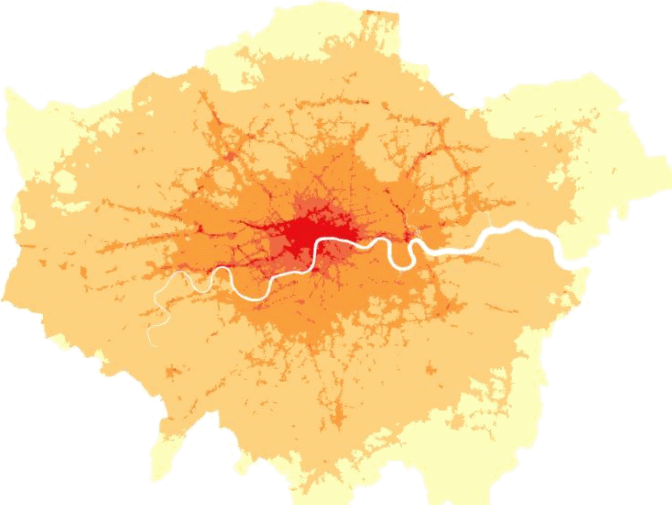New research reveals that every Londoner in the capital lives in an area exceeding World Health Organization (WHO) guidelines for the most dangerous toxic particulates known as PM2.5.
The research, based on the latest updated London Atmospheric Emissions Inventory, also shows that 7.9 million Londoners – nearly 95 per cent of the capital’s population – live in areas of London that exceed the guidelines by 50 per cent or more.
PM2.5 are small toxic air particles which are widely acknowledged to have the greatest impact on health with both short and long-term exposure increasing the likelihood of respiratory and cardiovascular diseases[1].
Children exposed to these toxic pollutants are more likely to grow up with reduced lung function and develop asthma, while PM2.5 is also known to result in 29,000 premature deaths in the UK every year[2].
New data, based on updated 2013 exposure estimates, shows that in central London the average annual levels of PM2.5 are almost double the WHO guideline limits of 10 µg/m3.
Around half of PM2.5 in London is from external sources outside the city, however, the main sources of PM2.5 emissions in London are from tyre and brake wear, construction and wood burning. Reducing these emissions and achieving WHO guidelines will require coordinated action by governments and cities around the world and a shift towards walking, cycling and using public transport, as well as new technologies like electric cars.
Concentrations of PM2.5 in London
The map shows that in 2013 there were no areas in London within the WHO guideline limit. Even the pale yellow area around the fringes of London, home to only 6.2 per cent of the city's population, has levels of PM2.5 in excess of the WHO guidelines.




